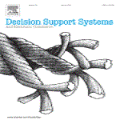A lot of deep learning (DL) research these days is mainly focused on improving quantitative metrics regardless of other factors. In human-centered applications, like skin lesion classification in dermatology, DL-driven clinical decision support systems are still in their infancy due to the limited transparency of their decision-making process. Moreover, the lack of procedures that can explain the behavior of trained DL algorithms leads to almost no trust from clinical physicians. To diagnose skin lesions, dermatologists rely on visual assessment of the disease and the data gathered from the patient's anamnesis. Data-driven algorithms dealing with multi-modal data are limited by the separation of feature-level and decision-level fusion procedures required by convolutional architectures. To address this issue, we enable single-stage multi-modal data fusion via the attention mechanism of transformer-based architectures to aid in diagnosing skin diseases. Our method beats other state-of-the-art single- and multi-modal DL architectures in image-rich and patient-data-rich environments. Additionally, the choice of the architecture enables native interpretability support for the classification task both in the image and metadata domain with no additional modifications necessary.
翻译:暂无翻译



